Savor the Flavors: An Authentic Boneless Chicken Handi Recipe from India
Embark on an epicurean adventure with our exquisite boneless Chicken Handi recipe, a culinary gem hailing from the enchanting land of India. This dish is a celebration of fragrant spices, rich textures, and deep flavors, promising a dining experience that transports you straight to the heart of traditional Indian kitchens. Forget bland curries; Chicken Handi offers a truly immersive taste of authentic Indian cuisine.
At its core, this recipe features succulent boneless chicken pieces, slow-cooked to perfection in a luscious, spicy, tomato and yogurt-based sauce. The curry is then elegantly finished with a touch of double cream, lending it an irresistible velvety texture and a luxurious feel. The harmonious blend of spices creates a medium heat level that is incredibly satisfying, yet easily adjustable to suit your personal preference. Whether you prefer a gentle warmth or a fiery kick, this recipe provides the flexibility to customize your culinary journey.
The name “Chicken Handi” itself provides a clue to its traditional origins, translating to “chicken in a clay pot.” Historically, this Northern Indian curry gained its distinctive earthy flavor and tender consistency from being cooked in an earthen clay pot, known as a handi. This unique cooking vessel allowed for slow, even heat distribution, infusing the chicken with an unparalleled depth of taste.
While the authentic experience involves a traditional clay pot, we understand that not everyone has access to such specialized cookware. Therefore, our recipe is expertly adapted for a heavy-based cast iron pot, which effectively mimics the slow cooking properties of a handi. This ensures you can achieve a remarkably similar depth of flavor and tender chicken in your home kitchen, making this beloved dish accessible to all.
Don’t let the seemingly extensive ingredient list deter you. While Indian cuisine is renowned for its complex spice blends, the preparation for this Chicken Handi is surprisingly straightforward. Once all your aromatic spices and fresh ingredients are gathered and prepped, the cooking process itself flows smoothly, making it an ideal choice for both seasoned cooks and culinary newcomers eager to explore Indian flavors.
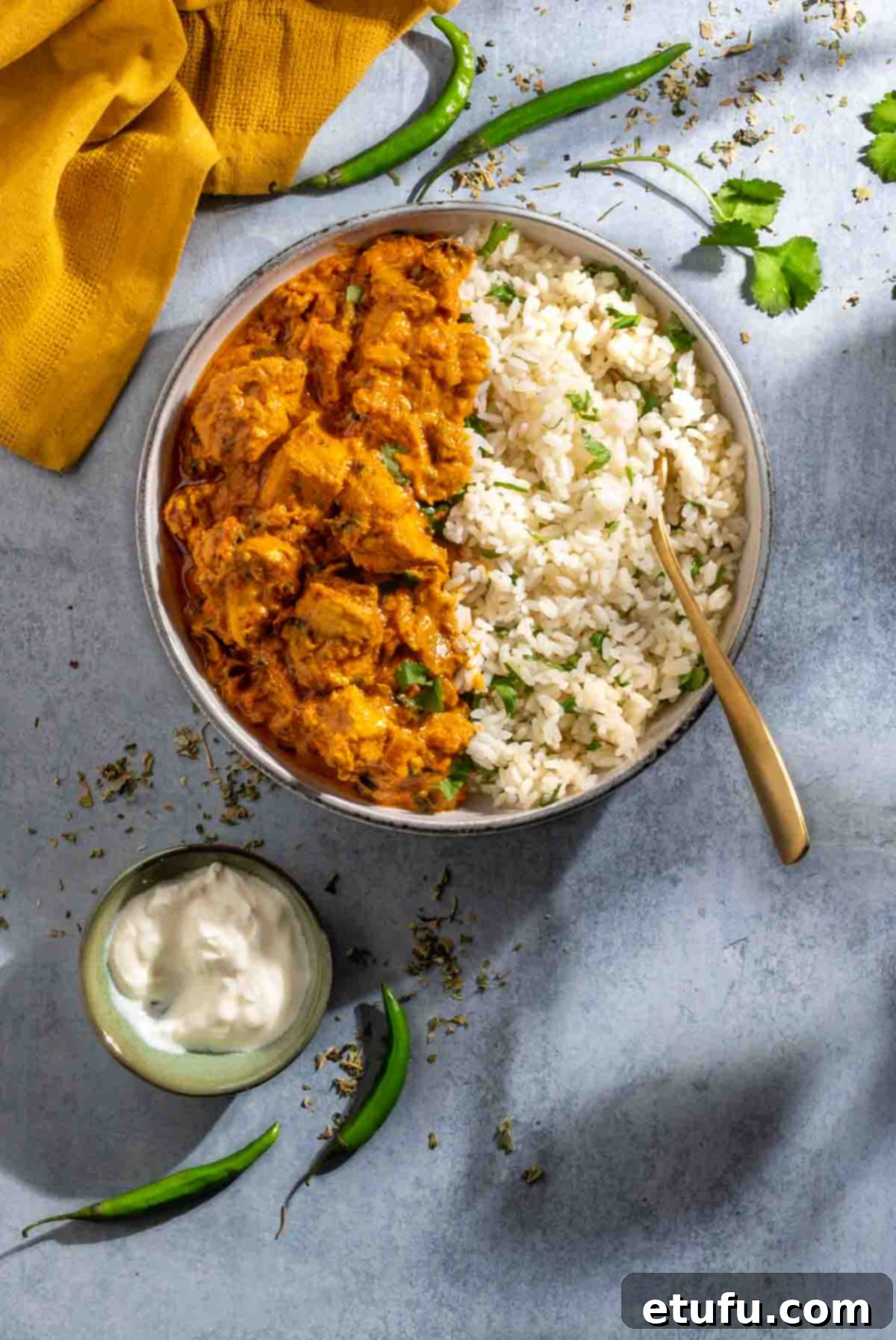
Fast Facts: India – Delve Deeper into the Land of Spices

| Location | India is a vast and diverse country strategically located in South Asia, forming a significant peninsula. It shares extensive land borders with several countries, including Pakistan to the west, China, Nepal, and Bhutan to the north, and Bangladesh and Myanmar to the east. This geographical position has historically influenced its rich cultural tapestry and culinary traditions. |
| Capital | New Delhi. As the capital city, New Delhi is not only the administrative center but also a hub of historical monuments, vibrant markets, and a melting pot of India’s diverse cultures, offering a glimpse into the nation’s past and present. |
| Language | India is celebrated for its incredible linguistic diversity, with hundreds of languages and dialects spoken across its various regions. While Hindi and English serve as the official languages of the Indian government, ensuring broad communication, the country officially recognizes 21 additional regional languages. These include prominent languages like Bengali, Telugu, Marathi, Tamil, Urdu, and Gujarati, each with its own script and rich literary heritage, reflecting the profound cultural depth of each state. |
| Population | With a population of approximately 1.3 billion people (as of recent estimates), India is the world’s second most populous country. This massive population contributes to a vibrant society, diverse workforce, and a dynamic economy, making it a significant global player in various sectors. |
| Trivia | On July 11, 2016, India made global headlines by achieving an astonishing Guinness World Record: planting over 50 million trees in just 24 hours. This monumental undertaking involved millions of volunteers and government officials across Uttar Pradesh, showcasing India’s profound commitment to environmental stewardship. This extensive reforestation initiative was driven by a dedication to mitigating climate change, significantly enhancing air quality, curbing widespread soil erosion, and preserving crucial wildlife habitats. The initiative garnered immense international attention, serving as a powerful and inspiring example of how collective action can effectively address urgent environmental issues on a grand scale, fostering a greener and more sustainable future. |
Why You’ll Adore This Easy Chicken Handi Recipe
- Quick Preparation: In today’s busy world, time is precious. This Chicken Handi recipe is designed for efficiency, taking less than an hour from start to finish. This makes it an ideal and delicious choice for a wholesome, homemade meal on even the busiest weeknights, without compromising on flavor or quality.
- Easy-to-Follow Instructions: Whether you’re a seasoned chef or a kitchen novice, you’ll find this recipe incredibly approachable. It comes with clear, concise, step-by-step instructions, complemented by helpful photos in the full blog post that guide you through each stage of the cooking process. This ensures a successful and enjoyable cooking experience every time.
- Customizable Heat Level: We all have different preferences when it comes to spice. This recipe offers a delightful medium heat level, perfect for most palates. However, you have complete control to adjust the spice to your personal taste, allowing you to create a curry that’s just right for you and your family.
- Ultimate Comfort Food: There’s something inherently comforting about a rich, warm curry. This restaurant-style Chicken Handi delivers on all fronts, providing the ultimate comfort food experience. It’s perfect for warming you up on a chilly evening or satisfying a craving for a hearty, deeply satisfying meal that feels both indulgent and nourishing.
- Impressive, Complex Flavors: Despite its straightforward preparation, this curry boasts a symphony of complex and deeply satisfying flavors. The careful layering of aromatic spices, combined with the tender chicken and creamy sauce, creates a dish that tastes like it took hours to make, yet comes together effortlessly.
- Minimal Cleanup: Who loves doing dishes? This recipe is a fantastic one-pot wonder, meaning you’ll have significantly fewer pots and pans to wash after cooking. This convenience is always a huge plus, allowing you more time to relax and enjoy your delicious creation.
- Excellent Leftover Potential: Like many great curries, Chicken Handi often tastes even better the next day! The flavors have more time to meld and deepen, creating an even more harmonious and intense taste. Any leftovers can be easily stored and enjoyed, making it perfect for meal prepping or a quick lunch.
Mastering the Flavors: Key Ingredients for Your Perfect Chicken Handi
**Please see the full recipe card at the bottom of this post for a complete list of ingredients and precise measurements.

Onion – The Aromatic Foundation
The humble onion forms the aromatic backbone of this curry. You have flexibility here; red, brown, or white onions, and even smaller, sweeter shallots, can be used interchangeably. The key is to aim for approximately 150g when chopped, as this amount provides the perfect balance of sweetness and depth once caramelized, building a robust flavor base for your Handi.
The Dry Spices – A Symphony of Aromas
Our Chicken Handi recipe features an extensive yet carefully balanced list of aromatic dry spices. These spices are the heart and soul of Indian cuisine, contributing to the dish’s signature complex flavor profile. If you’re a regular curry enthusiast, chances are your kitchen cupboard is already well-stocked with most of these essentials, including cumin, coriander, turmeric, and garam masala. We recommend adding half a teaspoon of red chilli powder for a pleasant medium heat, but feel free to increase this amount if you prefer a spicier curry that truly ignites the palate.
Dry Fenugreek Leaves (Methi Leaves) – The Secret Ingredient
While you likely have most of the other spices on hand, dry fenugreek leaves, also known as Methi leaves, might be a new addition to your collection. These tiny, aromatic leaves are a crucial component in Chicken Handi, imparting a distinctive, slightly bitter, and incredibly fragrant flavor that cannot be replicated. It’s important to note that you cannot substitute Methi leaves with fenugreek seeds or ground fenugreek, as their flavor profiles are quite different. Fortunately, most large supermarkets in the UK, such as Tesco, Sainsbury’s, and Ocado, typically stock Methi leaves in their international or spice aisles. Investing in a packet of Methi leaves is highly recommended, as they are a fantastic addition to your herb and spice collection, elevating many Indian dishes.
Garlic and Ginger – The Pungent Pair
For the most vibrant and authentic flavor, we highly recommend using fresh garlic cloves, crushed or minced, and freshly grated ginger root. Their pungent, aromatic qualities are truly unmatched. However, if you’re short on time, good quality garlic and ginger pastes, readily available in tubes or jars, can serve as a convenient and acceptable alternative without significantly compromising the overall taste.
Tomatoes – The Tangy Base
For convenience and consistent results, we opt for a can of chopped tomatoes in this recipe. They provide a reliable tangy and sweet base. However, if fresh, very ripe tomatoes are in season and readily available, feel free to use them instead. The riper the tomatoes, the sweeter and more flavorful your curry base will be, contributing to a richer and more authentic taste.
Chicken – The Heart of the Dish
This recipe calls for boneless chicken, giving you the choice between chicken breast or chicken thighs. Chicken thighs are often preferred by many for their slightly richer flavor and tendency to remain more tender and moist during cooking. However, chicken breast works equally well if that is your preference. Ensure the chicken is cut into large, bite-sized chunks for even cooking and a satisfying texture in the finished curry.
Green Chillies – Controlling the Heat
Two green chillies are specified to provide a balanced medium heat. If you desire a spicier curry, an extra chilli can easily be added. We typically use long, thin “finger chillies,” which are commonly found in the herb section of most supermarkets. For a milder curry, we scrape out the seeds, as this is where much of the heat resides. If you prefer more spice, simply leave the seeds intact.
Full-Fat Yogurt and Double Cream – For Richness and Texture
The full-fat versions of yogurt and double cream are essential for achieving the desired creamy, smooth texture of Chicken Handi. Low-fat alternatives tend to curdle when cooked under heat, which can negatively impact the curry’s consistency. The higher fat content in full-fat products ensures a stable emulsion, resulting in a velvety smooth sauce that perfectly coats the chicken and enhances the overall luxuriousness of the dish.
Optional Desiccated Coconut – A Hint of Sweetness
Adding desiccated coconut is entirely optional but highly recommended if you enjoy a subtle hint of sweetness and a delicate texture in your curry. Just 1-2 tablespoons can significantly enhance the flavor profile, adding another layer of complexity. Feel free to omit it if you prefer a more savory or less rich finish.
Step-by-Step Guide: Crafting Your Delicious Chicken Handi Curry
Prepping – The Foundation of Flavor
Efficient preparation is the key to an enjoyable and stress-free cooking experience. By measuring and preparing all your ingredients before you start cooking, you’ll ensure a smooth culinary journey.
- Begin by carefully measuring out all your ingredients. This is particularly important for the spices. For maximum efficiency, gather the chilli powder, turmeric, garam masala, ground coriander, and ground cumin into a single small bowl, as they will be added to the curry simultaneously.
- Dice the onion into small, even pieces. Set it aside for later use.
- If using fresh garlic and ginger, meticulously mince or grate them now. Place them in separate small bowls.
- Cut your boneless chicken (thighs or breast) into uniform, large bite-sized chunks. This ensures even cooking.
- Take the two green chillies, split them lengthwise, and carefully scrape out all the seeds for a milder heat. If you prefer more spice, you may leave some or all of the seeds.
- Finally, finely chop the fresh coriander leaves. This aromatic herb will be added at the very end to provide a burst of freshness.
Making the Curry – A Culinary Journey

- In a large, heavy-based pot (preferably cast iron for optimal heat retention), heat the cooking oil over medium-high heat. Allow the oil to shimmer, indicating it’s ready for the next step.
- Once the oil is hot, add the cumin seeds. Fry them for approximately 30 seconds until they begin to sizzle and pop, releasing their fragrant aroma. This vital step is known as tempering. Immediately reduce the heat to low to prevent burning.
- Add the previously chopped onions to the hot oil and cumin seeds.
- Stir-fry the onions patiently over a gentle, low heat for about 10 minutes. The goal is for them to become soft, translucent, and lightly browned, developing a rich, sweet caramelization that forms the flavorful foundation of the curry.
- Introduce the minced garlic and grated ginger to the pot. Continue to fry them with the onions for 1 more minute, stirring continuously until a fragrant aroma fills your kitchen. Be careful not to burn the garlic.
- Next, add the chopped tomatoes (canned or fresh) to the pan, ensuring the heat remains low.
- Cook the tomatoes uncovered for approximately 8 minutes. Stir occasionally. The sauce should reduce significantly, and you’ll notice a small amount of oil beginning to separate and pool on top of the reduced tomatoes (refer to the close-up photo in the blog post for visual guidance). This indicates the tomatoes are properly cooked down.
- Stir in the pre-measured red chilli powder, turmeric powder, garam masala, ground coriander, ground cumin, and sugar. Cook for just 30 seconds over a low flame, stirring constantly to toast the spices and release their full aroma without burning them.
- Add the diced chicken pieces and the halved green chillies to the rich spice-tomato base. Stir well to ensure all the chicken is thoroughly coated with the aromatic sauce. Continue to cook for 1 minute.
- Stir in the full-fat yogurt, salt, and freshly ground black pepper. Now, assess the liquid level. Add approximately 120ml of water, but adjust this quantity based on your curry’s consistency. If the curry appears very dry, add a little more water; if it looks sufficiently saucy, add less to achieve your desired thickness.
- Tightly seal the pot with its lid. Allow the curry to cook for 18-20 minutes, or until the sauce has further reduced, thickened, and the chicken is incredibly tender and cooked through. Remember to stir the curry at frequent intervals (every 5 minutes or so) to prevent it from sticking to the bottom and sides of the pot.
- Throughout the cooking process, continue to check the water level. If the curry looks dry, add more water as needed. Conversely, if there appears to be too much liquid and you prefer a thicker sauce, remove the lid and continue to cook the curry uncovered for the remainder of the time, allowing excess moisture to evaporate.
- Finally, stir in the fresh double cream and the dry fenugreek leaves. As you sprinkle in the fenugreek leaves, gently rub them between your fingers. This action helps to release their essential oils and enhance their unique, aromatic flavor into the curry. Cook uncovered for an additional 4 minutes, allowing the flavors to fully meld and the cream to integrate beautifully.
- Gently stir in the freshly chopped coriander and the desiccated coconut, if you choose to use it. These additions provide a final burst of freshness and a subtle textural element.
- Allow the curry to rest off the heat for 5-10 minutes before serving. This crucial resting period allows the complex flavors to deepen and meld together, resulting in a more harmonious and delicious dish.
- Serve your hot, fragrant Chicken Handi with your favorite accompaniments, such as fluffy basmati rice, warm naan bread, soft flatbreads, or traditional chapati. Enjoy!

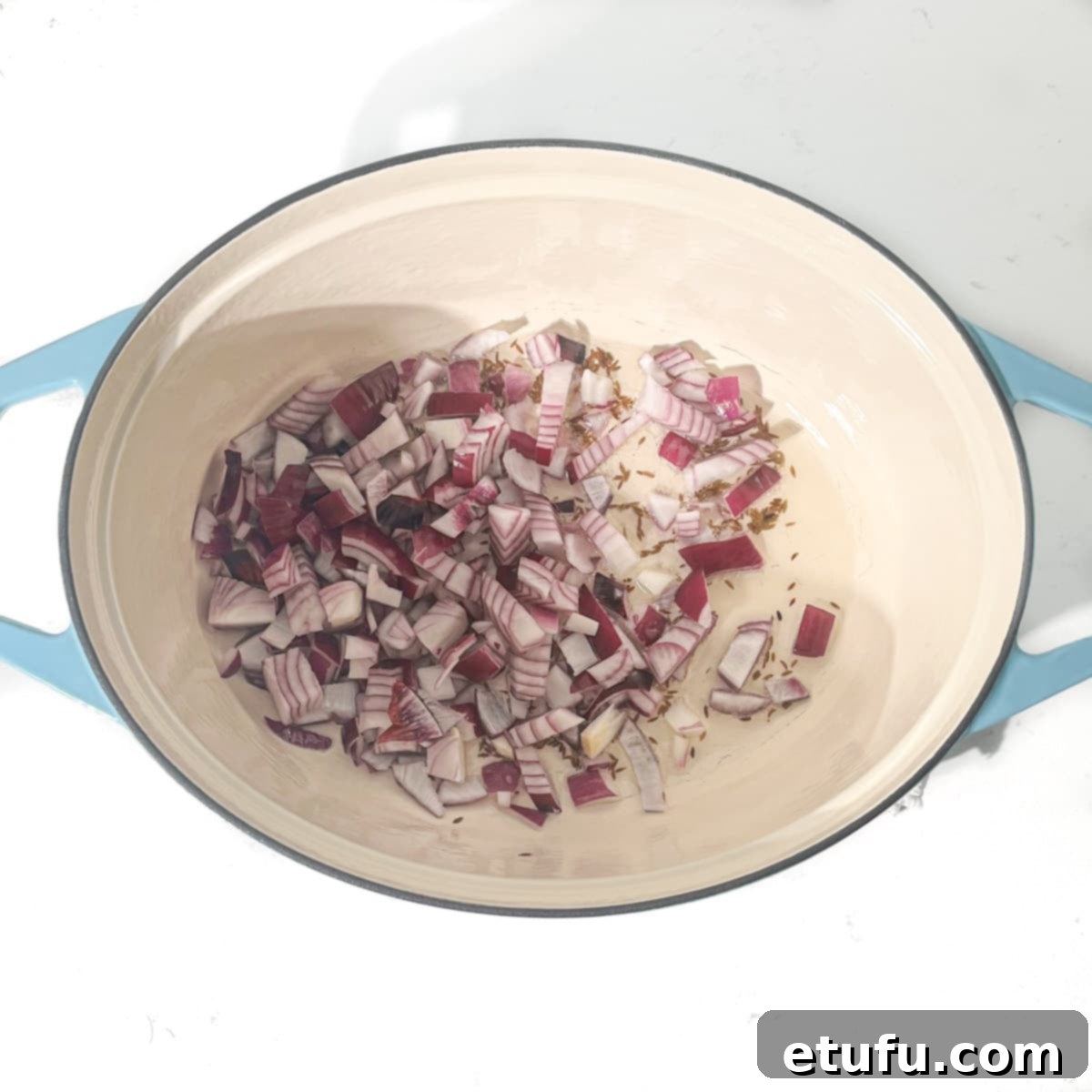
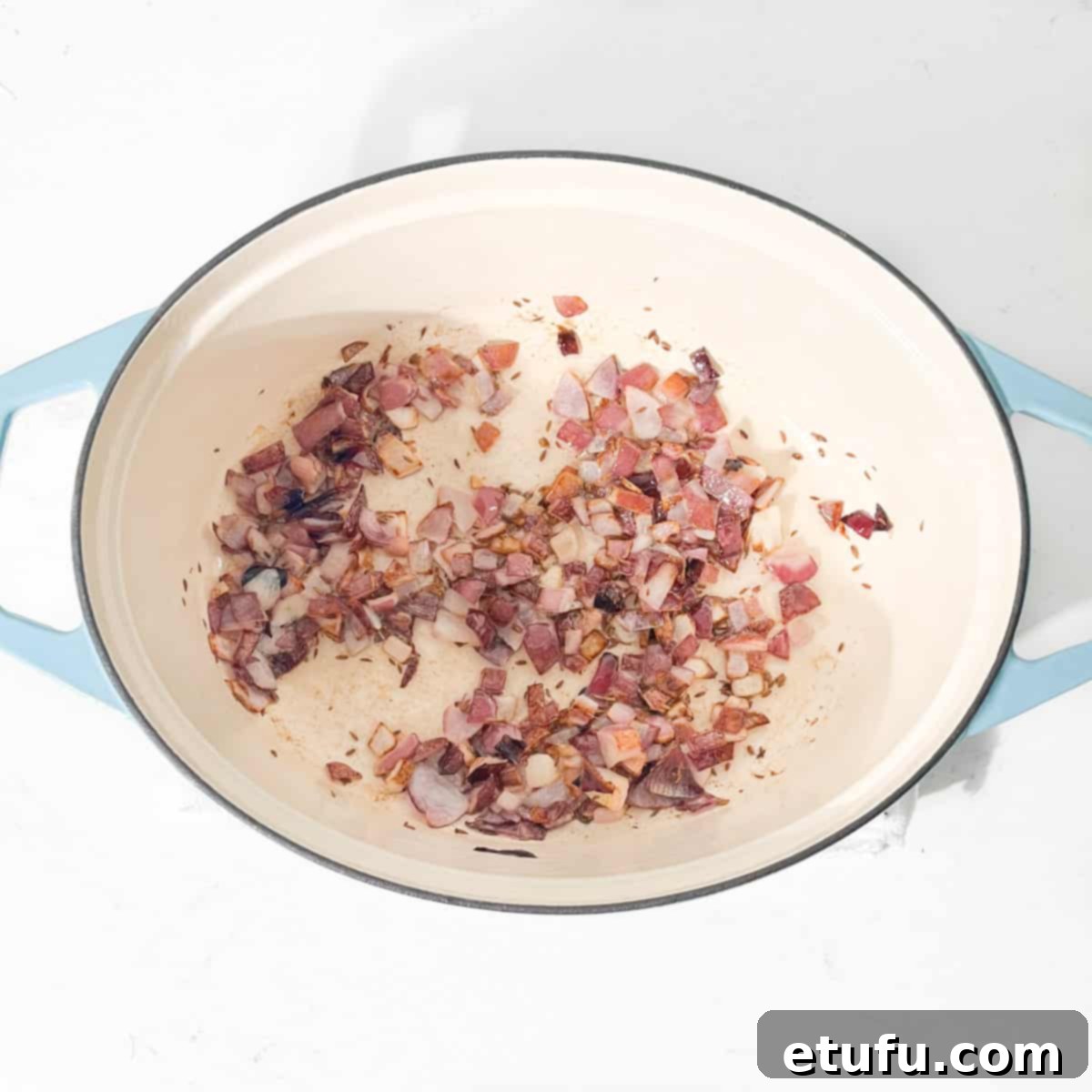
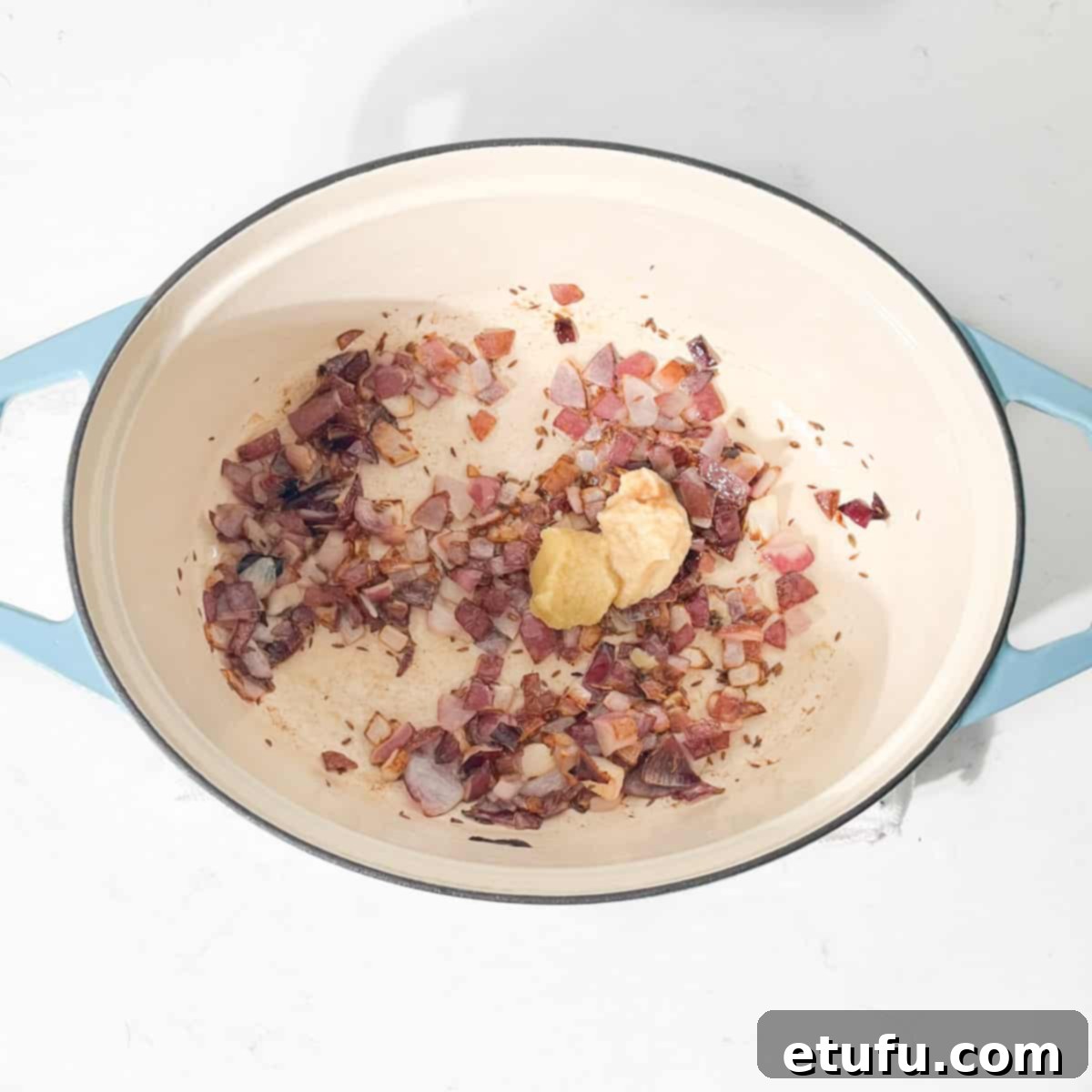
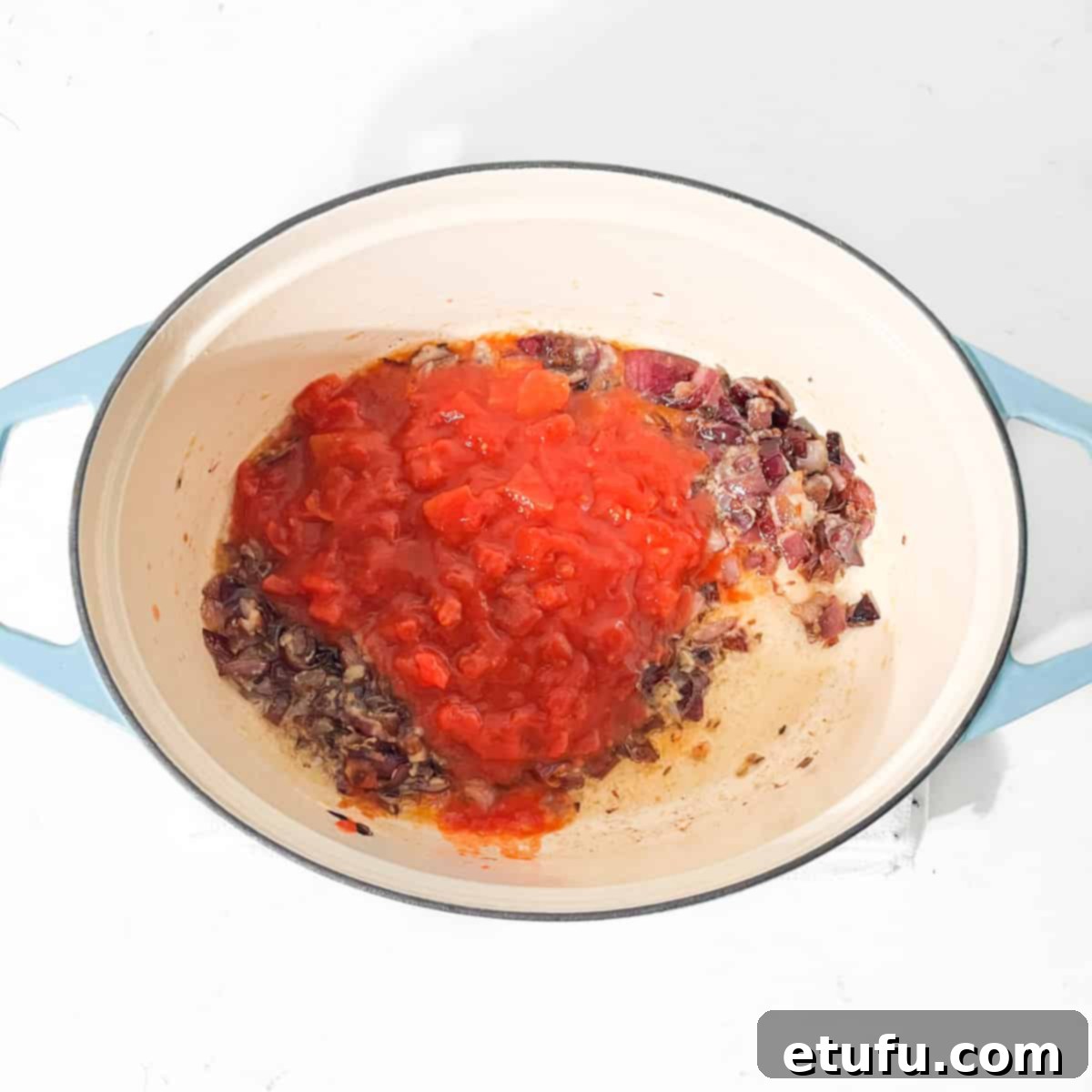
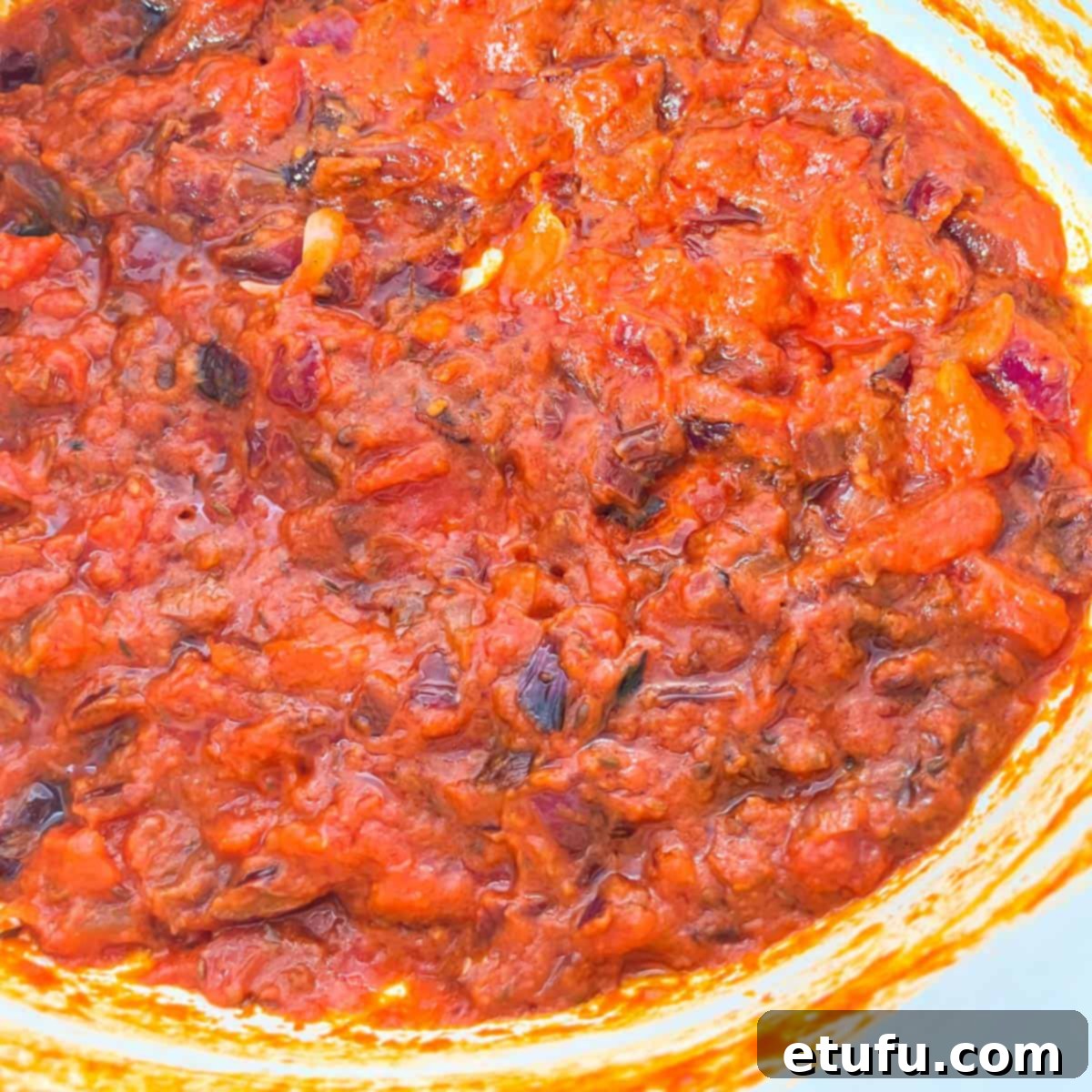

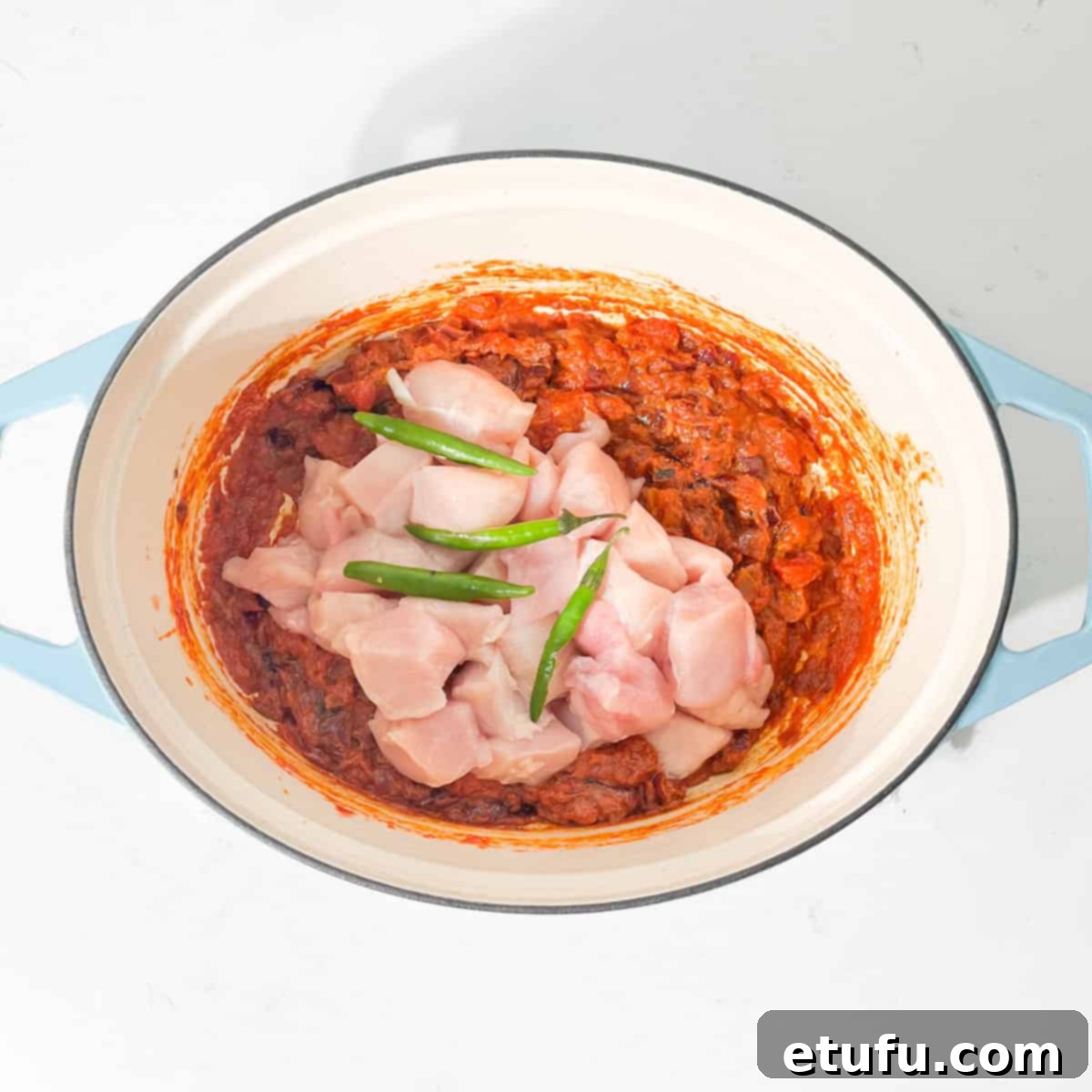

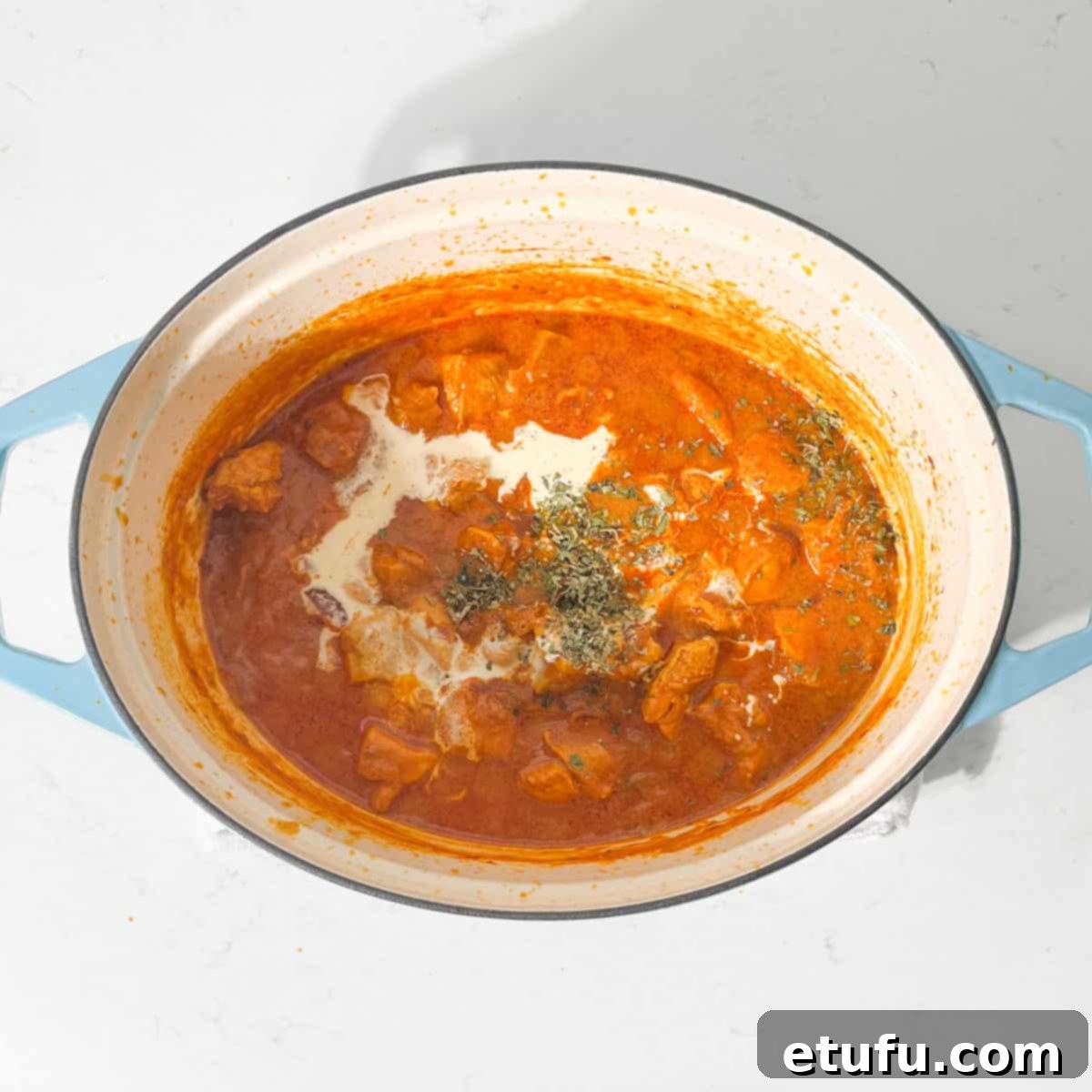
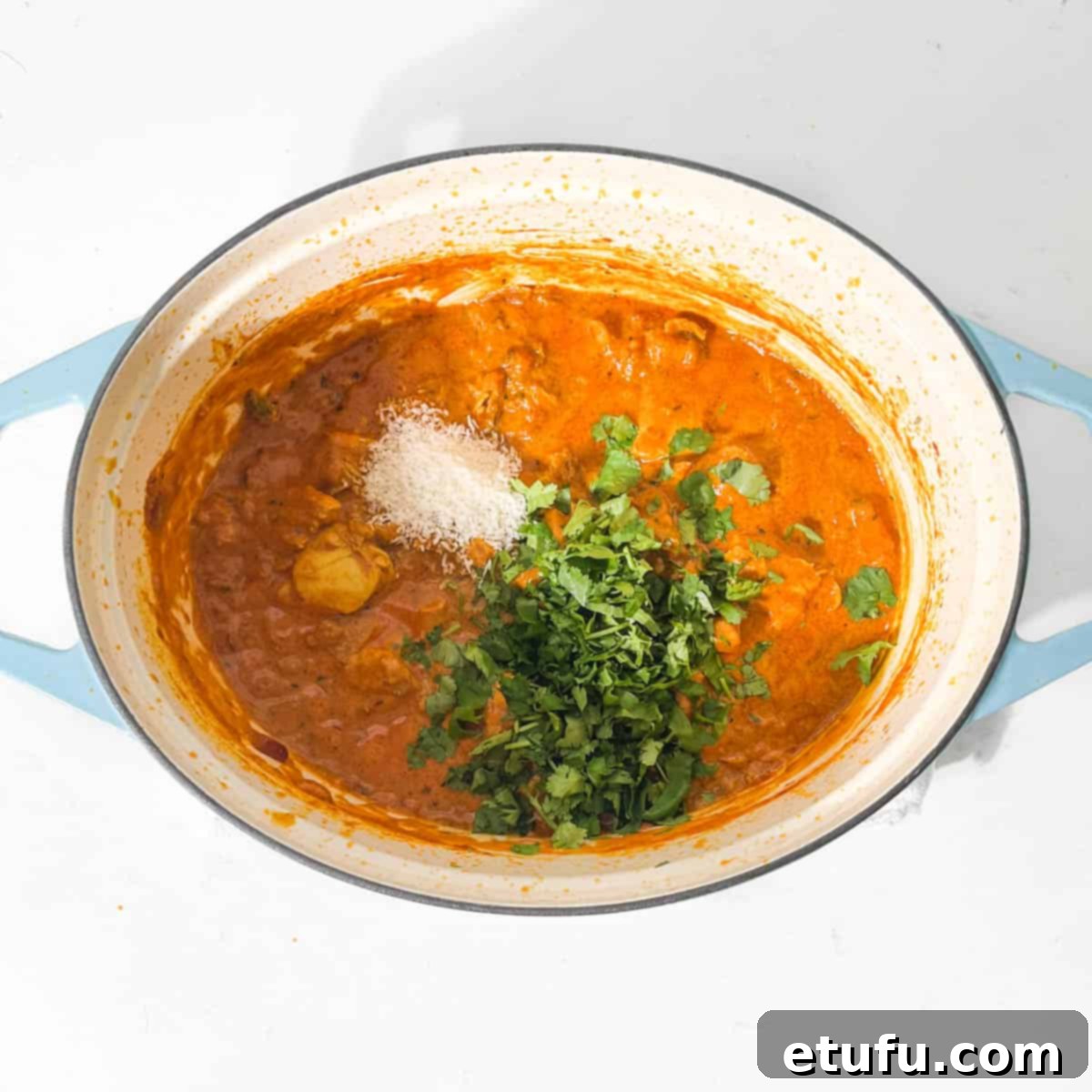
Expert Tips for an Unforgettable Chicken Handi Experience
Measure Spices Accurately – Precision for Perfection
The success of any Indian curry lies in the precise balance of its spices. Ensuring your spices are measured accurately is absolutely paramount to achieving the authentic flavor profile of Chicken Handi. Be patient and use a knife or a flat edge to level off your measuring spoons for that perfect, consistent measure. Being too generous with certain spices can overwhelm the dish, while being too frugal can result in a lack of depth and flavor, leading to surprising and usually unwanted flavor twists.
Utilize Low, Gentle Heat – The Secret to Deep Flavors
When cooking Chicken Handi, especially in a heavy-based pot like cast iron, maintaining a low, gentle heat for the majority of the cooking process is crucial. Heavy pots excel at retaining heat, so a high flame is often unnecessary and can lead to burning at the bottom. A slow, gentle simmer is ideal, as it allows the complex flavors of the spices and ingredients to slowly develop and meld together, creating a richer, more nuanced curry. This also prevents scalding or sticking, ensuring a smooth, beautifully cooked sauce.
Monitor Liquid Levels – Achieving the Perfect Consistency
Keeping a close eye on the curry’s liquid content is vital for the perfect consistency. The exact amount of water needed can vary depending on several factors, including the size and material of your pot, and the intensity of your heat source. Regularly check the curry and add more water if it appears too dry or is sticking. Conversely, if the curry seems too watery, simply remove the lid and allow it to simmer uncovered for a while, letting excess liquid evaporate until it reaches your desired thickness. The right amount of liquid ensures tender chicken and a lusciously saucy curry.
Thoroughly Brown the Onions – Building the Flavor Base
The step of frying the onions until they are soft and lightly browned is not to be rushed. This process, known as caramelization, is fundamental to building the deep, sweet, and savory flavor base for your curry. Taking the time to slowly fry the onions over low heat significantly deepens their flavor, contributing immensely to the overall complexity and richness of the Chicken Handi. This aromatic foundation is what elevates the dish from good to truly exceptional.
Embrace Resting Time – The Final Touch for Flavor Fusion
After your Chicken Handi has finished cooking, resist the urge to serve it immediately. Allowing the curry to rest for 5-10 minutes off the heat is a simple yet crucial step. This resting period provides an opportunity for all the individual flavors of the spices, chicken, and sauce to fully integrate and meld together, creating a more harmonious and intense taste experience. It’s the final touch that ensures maximum flavor development before serving.
Perfect Pairings: What to Serve with Your Chicken Handi
- Steamed Basmati Rice: Its fragrant, fluffy grains are ideal for soaking up the rich, creamy sauce of the Handi. Consider variations like coconut rice or yellow rice for added flavor.
- Naan Bread: Warm, soft, and chewy Peshwari naan or plain naan is perfect for scooping up every last drop of the delicious curry.
- Raita or Cucumber Slices: These cooling accompaniments, typically yogurt-based with cucumber and mint, help to balance the medium heat of the curry and refresh the palate.
- Roasted Cauliflower or Okra: Simple vegetable sides like roasted cauliflower or sautéed okra offer a delightful texture and a healthy contrast to the rich curry.
- Poppadoms or Pakoras: Add a satisfying crunch to your meal with crispy poppadoms or savory pakoras, perfect for dipping.
- Mango Chutney, Lime Wedges, or Pickled Vegetables: These condiments provide a tangy, sweet, or sharp counterpoint, enhancing the overall flavor profile of your meal.
- Flatbreads or Chapatis: As popular bread alternatives, these are excellent for a more rustic and authentic Indian dining experience.
- Cold Tomato and Onion Chutney: A refreshing and zesty addition that cuts through the richness of the curry.
- Indian Mint Sauce: A cool, herbaceous sauce that provides a refreshing counterpoint to the spices.
Quench Your Thirst: Ideal Drinks to Complement Your Curry
- Mango or Strawberry Lassi: These creamy, yogurt-based drinks are a classic choice for taming the spicy heat of a curry, offering a sweet and cooling refreshment. Try a homemade strawberry lassi for a delightful twist.
- Indian Beers: Popular Indian lagers like Kingfisher or Cobra are excellent choices, as their crispness and mild bitterness perfectly complement rich, spicy dishes.
- Ginger Ale or Lemon Soda: For a non-alcoholic option, these fizzy, refreshing drinks offer a palate cleanse and a bright contrast to the curry’s robust flavors.
- Mango Juice or Pineapple Juice: The natural sweetness and tropical tang of these juices can provide a delightful balance to the savory and spicy notes of the Handi.
- Iced Coffee or Masala Chai (Chilled): A cool and invigorating iced coffee or a chilled, spiced masala chai can offer an interesting and satisfying beverage experience alongside your meal.
- Sparkling Water with Lime or Lemon Juice: Simple yet effective, this provides a clean, refreshing fizz that cleanses the palate between bites, enhancing your enjoyment of the curry’s complex flavors.
Storage Solutions: Keeping Your Chicken Handi Fresh
To ensure your delicious Chicken Handi remains fresh and flavorful, store any leftovers in an airtight container in the refrigerator for 3-4 days. It is crucial to allow the curry to cool completely to room temperature before transferring it to the container and placing it in the fridge. This prevents the growth of bacteria and maintains food safety. You’ll often find that, like many curries, the flavors of Chicken Handi tend to deepen and become even more robust and harmonious after a day or two of resting, making leftovers a real treat.
Reheating Your Handi: Bringing Flavors Back to Life
Reheating your Chicken Handi is simple, whether you prefer the convenience of a microwave or the traditional method on the stovetop. For stovetop reheating, transfer the curry to a pot and heat over medium-low flame, stirring occasionally to ensure even heating and prevent sticking. Continue until it’s piping hot throughout. If using a microwave, cover the container and heat in 30-second intervals, stirring thoroughly between each interval, until the curry is heated through. Always check for your desired consistency; if it appears too thick, a small splash of water can be added to loosen it.
Freezing Chicken Handi: Meal Prep Made Easy
Chicken Handi freezes beautifully, making it an excellent candidate for meal prepping. To freeze, portion the cooled curry into freezer-safe, airtight containers. Be sure to leave about 1 inch of headspace at the top of each container to allow for expansion during freezing. Seal tightly and freeze for up to 3 months. When you’re ready to enjoy it again, thaw the curry overnight in the refrigerator. Reheat using the stovetop or microwave methods described above. If the curry seems overly thick after thawing and reheating, simply add a splash of water or a little cream to restore its ideal consistency.
Explore More Culinary Adventures: Other Curry Recipes You’ll Love
If you’ve enjoyed the rich flavors of this Chicken Handi, we invite you to explore more exciting curry recipes from our collection:
Chicken Dopiaza – A delicious curry with double the onions for extra flavor.
Nepalese Chicken Curry – Our most popular curry recipe, known for its unique aromatic blend!
Oven-baked Pasanda Curry – A milder, creamy curry that’s perfect for a comforting meal.
Creamy Butter Bean Curry – A delightful vegetarian option, rich with coconut milk.
Aromatic Beef Curry with Coconut Milk – A robust and flavorful beef curry, ideal with butter rice.
Easy South African Bobotie – A unique and delicious South African spiced minced meat dish with an egg-based topping.
Quick Chicken Karahi – A fast and flavorful Pakistani and Indian curry, often cooked in a wok-like karahi.
Curry Noodle Salad – A refreshing and light option, perfect for a different kind of curry experience.
Or read all about Spices here to deepen your culinary knowledge!
Frequently Asked Questions About Chicken Handi
While both Chicken Handi and Butter Chicken are beloved Indian chicken curries known for their creamy, tomato-based sauces and aromatic spices, they possess distinct differences. Chicken Handi is traditionally characterized by its unique preparation method in a clay pot, which imparts a subtle earthy flavor and a more rustic texture. The sauce often has a more pronounced tangy and spicy profile, with yogurt playing a key role. Butter Chicken, on the other hand, is renowned for its rich, buttery, and typically sweeter sauce, often incorporating cashews and a significant amount of butter or ghee, resulting in a silkier texture and a milder, sweeter flavor profile. Both are incredibly delicious, but offer different culinary experiences.
The term “Chicken Handi” directly translates to “chicken cooked in a clay pot.” A ‘handi’ is a traditional deep, narrow-mouthed cooking vessel, often made of terracotta or clay, historically used in South Asian cuisine for slow cooking. This traditional cooking method is integral to the dish’s identity, imparting a unique depth of flavor and tender texture that is highly prized.
If your Chicken Handi has turned out spicier than you intended, there are several easy ways to mellow the heat. You can stir in an extra tablespoon or two of double cream, which will dilute the spice and add a cooling richness. Alternatively, serving each portion with a generous dollop of plain, full-fat yogurt or raita on top can significantly cool the palate. You can also add a touch of coconut milk or a pinch of sugar to help balance the spice, or simply enjoy it with extra plain rice or cooling cucumber slices.
Recipe

Chicken Handi
It features boneless chicken cooked in a rich, spicy, tomato and yoghurt-based sauce, finished off with a touch of double cream. Yes, it’s as good as it sounds on paper! The heat level is medium, but you can adjust this to your taste.
Print Recipe
Main Course
Indian
50 minutes
50 minutes
4 servings
576kcal
Maretha Corbett
Equipment
- 1 large heavy-based lidded pot – like cast iron or enamel
Ingredients
- 3 tablespoons oil – like vegetable or sunflower oil
- 1 teaspoon cumin seeds
- 1 large onion – chopped, about 150g
- 1 tablespoon garlic – minced or very finely chopped, can also use paste
- 1 tablespoon ginger – grated, can also use paste
- 400 grams chopped tomato – or 1 x 400g tin of chopped tomato
- ½ teaspoon red chilli powder
- 1 teaspoon turmeric
- 1 teaspoon garam masala
- 1 teaspoon ground coriander
- ½ teaspoon ground cumin
- 1 tablespoon sugar
- 650 grams boneless chicken – like thigh or breast, diced into chunks
- 2 green chillies – slit lengthways, seeds removed
- 100 grams full fat plain yoghurt – like full fat Greek yoghurt
- 120 millilitre water – adjust quantity as needed
- 1 teaspoon salt – or to taste
- few good grinds black pepper
- 3 tablespoons double cream
- 1 teaspoon fenugreek leaves (methi leaves)
- handful fresh coriander – roughly chopped
- 1-2 tablespoons desiccated coconut (optional)
Instructions
Prepping
- Measuring out all the ingredients beforehand makes cooking easier and more enjoyable, especially the spices.
The chilli powder, turmeric, garam masala, ground coriander and ground cumin all can be measured together into one small bowl since they will be added to the curry at the same time.
- Dice the onion. Set aside.
- If you’re using fresh garlic and ginger, prepare them now. Set aside.
- Cut the chicken into large bite-sized chunks. Set aside.
- Split the two chillies lengthwise and scrape out all of the seeds. Set aside.
- Chop the fresh coriander. Set aside.
Make the curry
- Heat the oil in a large heavy-based pot over medium-high heat.3 tablespoons oil
- Once the oil is hot, fry the cumin seeds for about 30 seconds until they start sizzling and popping. Immediately turn the heat down to low.1 teaspoon cumin seeds
- Add the chopped onion to the hot oil.1 large onion
- Fry the onions over gentle, low heat for 10 minutes until soft and lightly browned.
- Add the garlic and ginger and fry with the onions for 1 more minute.1 tablespoon garlic, 1 tablespoon ginger
- Next, add the chopped tomatoes to the pan, still keeping the heat on low.400 grams chopped tomato
- Cook the tomatoes uncovered for around 8 minutes, until the sauce has reduced significantly and a little oil starts to pool on top of the tomatoes (please see the close-up photo in the blog post as reference).
- Stir in the chilli powder, turmeric, garam masala, ground coriander, ground cumin and sugar. Cook for 30 seconds, still over low heat.½ teaspoon red chilli powder, 1 teaspoon turmeric, 1 teaspoon garam masala, 1 teaspoon ground coriander, ½ teaspoon ground cumin, 1 tablespoon sugar
- Add the chicken pieces and halved chillies to the sauce. Stir to coat the chicken for 1 minute.650 grams boneless chicken, 2 green chillies
- Stir in the full fat yogurt, salt and pepper. Check the water level, adding about 120ml but adjust this according to your situation. If the curry looks very dry, add a little more, if it looks saucy, add less.100 grams full fat plain yoghurt, 120 millilitre water, 1 teaspoon salt, few good grinds black pepper
- Tightly seal the pot with its lid and cook the curry for 18-20 minutes until the sauce has reduced and the chicken is soft and cooked through. Stir the curry at frequent intervals to ensure it’s not sticking to the bottom and sides.
- Check the water level every 5 minutes or so and add more if it looks dry. If there is too much liquid, remove the lid and cook the curry uncovered for the remainder of the time.
- Add the double cream and fenugreek leaves. As you sprinkle in the fenugreek leaves, gently rub them between your fingers to help release more of their flavour. Cook uncovered for 4 additional minutes.3 tablespoons double cream, 1 teaspoon fenugreek leaves (methi leaves)
- Stir in the chopped fresh coriander and desiccated coconut, if you are using it.handful fresh coriander, 1-2 tablespoons desiccated coconut (optional)
- Allow the curry to rest for 5-10 minutes before serving. It allows the flavours to meld.
- Serve hot with your favourite rice, naan bread, flatbread or chapati.
Notes
- Measure the Spices Accurately
- Use Low, Gentle Heat
- Keep an Eye on the Liquid Level
- Brown the Onions Thoroughly
- Allow Resting Time
**Nutritional data disclaimer**
Please keep in mind that the nutritional information provided below is calculated by a third party and we cannot guarantee its accuracy. We try our best to give you the most accurate information, but we do not take responsibility for errors that may be present. Also, the nutritional value of the recipe may change depending on the exact brands and products used. We recommend that you consult with a qualified healthcare professional or registered dietitian for personalized advice on your dietary needs.
Nutrition
For food safety advice, including guidance on food allergies
